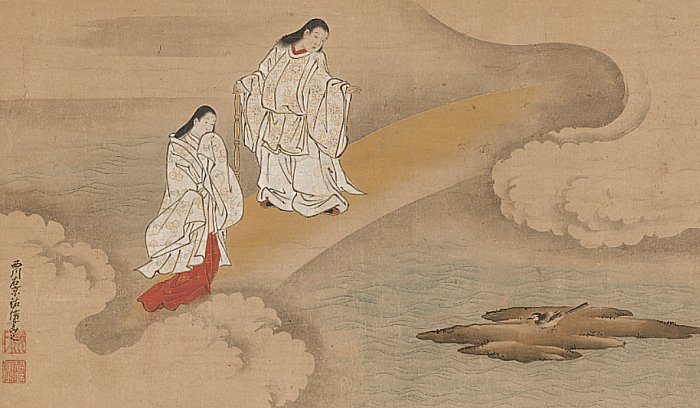Izanagi and Izanami And World Creation In Shinto Cosmology
A. Sutherland - AncientPages.com - Shinto traditions are the cornerstones of Japanese mythology. The origin of the gods and the world dates back to a time before earth and heaven existed.
In Shinto theology, Izanagi and Izanami are considered the progenitors of the world and the Japanese archipelago.
The God Izanagi and Goddess Izanami. Nishikawa Sukenobu Japanese,
At the beginning, there was only a formless mass of swirling gases, of which some slowly began to rise and form the heavens. The denser and darker material sank due to its weight and formed the earth. Then, three divinities created themselves and hid. After them, two other divinities were born, and they, too, hid. It was when the earth—still very young—was moving like a jellyfish.
In this way, seven more gods were born, the last two of which were Izanagi ('Male-who-invites') and Izanami ('Female-who-invites').
This divine pair (brother and sister) are the central deities and creator gods in early Shinto beliefs. They were born after heaven and earth separated out of the endless chaos. The heavenly divinities also commanded them “to complete and solidify the still drifting land."
While standing on the Floating Bridge of Heaven, the siblings looked down into the abyss and wondered if there was anything in the waters of the primeval ocean beneath them. Then, Izanagi plunged his heavenly jeweled spear into the ocean and lifted it. The drop that fell formed the first landmass—an island—Onogoro. The siblings descended on this island and got married there.
Izanagi-jingu Haiden - Shinto shrine located in Awaji, Hyogo Prefecture, Japan. Image credit: ChiefHira - CC BY-SA 3.0
Then, the couple began to procreate the world. First, Izanami released two creations, Hiruko ("floating in mourning") and Ahashima ("the island of foam"). Still, these two did not meet parents' expectations and were rejected for lack of solid consistency.
They learned the art of love-making by watching a pair of wagtails, and these water birds are still associated with the couple. The divine marriage (Izanagi and Izanami) slowly filled the world with mountains, rivers, forests, waterfalls, trees, herbs, and the wind.
Izanami gave birth to new deities successively, but the last one caused the divine pair many troubles. Izanami gave birth to the fire god, became very ill, and soon died.
Izanagi's Descent Into Hell And His Terrible Experience
Izanagi was heartbroken when his wife died and left for Yomi, the Land of Gloom, as the underworld is known in ancient Japanese beliefs.
He followed her to Yomi and met her there. She agreed to return with him to the world of the living on the condition that he would wait for her without entering the Land of the Dead. Izanagi did not keep his promise and followed his lovely wife. He found Izanami's body decomposing and full of worms, watched over by eight gods of thunder. Horrified, Izanagi managed to flee back to the world, but this terrible contact with the world of the dead made him feel very dirty.
He had to undergo ritual purification, and when he washed his left eye, he gave birth to the great goddess Amaterasu, goddess of the Sun. He then washed his right eye and brought into the world the god of the Moon, Tsukiyomi. Then, he washed his nose and gave birth to the god Susanoo, the third of his noble children. (In one version, all three deities were created from Izanagi's eyes.)
Kobayashi Eitaku, Izanagi and Izanami, c. 1885. Upploader: Lamré - Public Domain - source
He appointed Amaterasu, the goddess of the sun and ruler of the High Plain of Heaven. Her brother, Susanoo, became the ocean ruler and god of storms, while her second brother, Tsukuyomi, was appointed the god of the moon.
In this story, through their divine marriage and offspring, Izanagi and Izanami established the nature pattern for all time; however, through their divorce, they created mortal life and death.
The Land of the Living and the Land of the Dead have prohibitions. Izanagi broke some of these prohibitions. In the underworld, Yomi (or the Land of Gloom), there was no prohibition to look at Izanami, and in fact, her husband met her there, but he was not allowed to enter the “Palace” or the “House,” where the process of transition was taking place.
When Izanami was trying to come to life (or rejuvenate) in the “palace,” Izanagi broke the taboo and entered the place; he saw terrible things taking place and her wife’s body decomposing. He broke the laws of the underworld because he interrupted the processes involved in the transition between the worlds of the dead and the living. According to ancient Japanese beliefs, the rejuvenation process should not be disturbed and should be observed by outsiders.
The dead should not be observed during the process of transition.
Written by – A. Sutherland - AncientPages.com Senior Staff Writer
Updated on July 24, 2024
Copyright © AncientPages.com All rights reserved. This material may not be published, broadcast, rewritten or redistributed in whole or part without the express written permission of AncientPages.com
More From Ancient Pages
-
 New Paintings And Details Uncovered In The Egyptian Temple Of Esna
Places | Oct 22, 2024
New Paintings And Details Uncovered In The Egyptian Temple Of Esna
Places | Oct 22, 2024 -
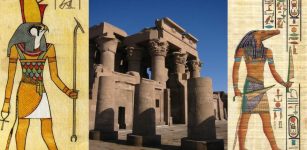 Unusual Double Temple Of Kom Ombo Dedicated To Crocodile God Sobek And Falcon-Headed God Horus
Featured Stories | Mar 14, 2016
Unusual Double Temple Of Kom Ombo Dedicated To Crocodile God Sobek And Falcon-Headed God Horus
Featured Stories | Mar 14, 2016 -
 America’s Mysterious Waffle Rock Formation
Featured Stories | Apr 15, 2014
America’s Mysterious Waffle Rock Formation
Featured Stories | Apr 15, 2014 -
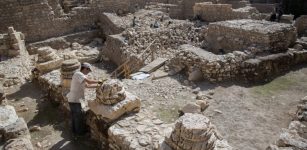 Ancient Mystery Of Acra Citadel – Solved
Archaeology | Nov 3, 2015
Ancient Mystery Of Acra Citadel – Solved
Archaeology | Nov 3, 2015 -
 Legend Of Brigadoon: Mythical Village Where Time Stands Still
Featured Stories | Nov 2, 2016
Legend Of Brigadoon: Mythical Village Where Time Stands Still
Featured Stories | Nov 2, 2016 -
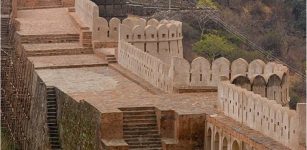 Magnificent And Massive Great Wall Of India – Astonishing Ancient Structure Shrouded In Secrecy
Civilizations | Jul 7, 2015
Magnificent And Massive Great Wall Of India – Astonishing Ancient Structure Shrouded In Secrecy
Civilizations | Jul 7, 2015 -
 Oldest Cyrillic Inscriptions Dated To The Time Of King Simeon the Great – Discovered
Archaeology | May 3, 2023
Oldest Cyrillic Inscriptions Dated To The Time Of King Simeon the Great – Discovered
Archaeology | May 3, 2023 -
 The Untold Story Of The Inca – Fire In The Sky – Part 1
Ancient Mysteries | Jul 2, 2019
The Untold Story Of The Inca – Fire In The Sky – Part 1
Ancient Mysteries | Jul 2, 2019 -
 On This Day In History: A Solar Eclipse Occurs, As Predicted By Thales Of Miletus – On May 28, 585 BC
News | May 28, 2016
On This Day In History: A Solar Eclipse Occurs, As Predicted By Thales Of Miletus – On May 28, 585 BC
News | May 28, 2016 -
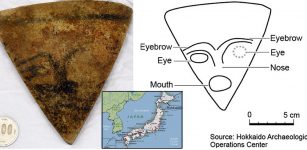 Jomon Period: Triangle-Shaped Stone Artifact Depicting Human Face Found For The First Time In Japan
Archaeology | Dec 25, 2017
Jomon Period: Triangle-Shaped Stone Artifact Depicting Human Face Found For The First Time In Japan
Archaeology | Dec 25, 2017 -
 Hidden History Of Skull And Crossbones: The Untold Story Of The Templar And Their Connection To The Shining Ones
Featured Stories | Aug 6, 2018
Hidden History Of Skull And Crossbones: The Untold Story Of The Templar And Their Connection To The Shining Ones
Featured Stories | Aug 6, 2018 -
 Vatican Secrets – Extraterrestrial Life And Genetically Engineering Of Humans By Advanced Alien Species
Featured Stories | Oct 6, 2018
Vatican Secrets – Extraterrestrial Life And Genetically Engineering Of Humans By Advanced Alien Species
Featured Stories | Oct 6, 2018 -
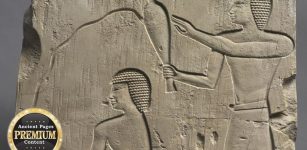 Daily Life Of Priests And Priestesses In Ancient Egypt
Ancient History Facts | Apr 5, 2018
Daily Life Of Priests And Priestesses In Ancient Egypt
Ancient History Facts | Apr 5, 2018 -
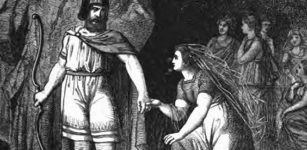 Freya And Her Lovely Husband Odr, God Of Summer Sun And Passion In Norse Mythology
Featured Stories | Dec 3, 2018
Freya And Her Lovely Husband Odr, God Of Summer Sun And Passion In Norse Mythology
Featured Stories | Dec 3, 2018 -
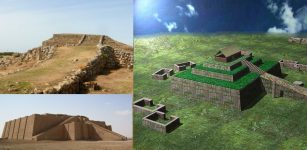 Monte d’Accoddi – Mesopotamian Ziggurat In Europe Built By King Of Uruk?
Featured Stories | Feb 5, 2018
Monte d’Accoddi – Mesopotamian Ziggurat In Europe Built By King Of Uruk?
Featured Stories | Feb 5, 2018 -
 142,000-Year-Old Shell Beads Found In A Cave Are The Oldest Known Evidence Of Human Communication
Archaeology | Oct 16, 2021
142,000-Year-Old Shell Beads Found In A Cave Are The Oldest Known Evidence Of Human Communication
Archaeology | Oct 16, 2021 -
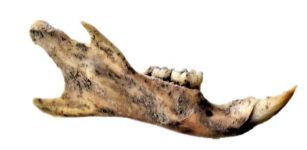 New DNA Study Reveals How The Black Rat Colonized Europe In The Roman And Medieval Periods
Archaeology | May 6, 2022
New DNA Study Reveals How The Black Rat Colonized Europe In The Roman And Medieval Periods
Archaeology | May 6, 2022 -
 Ancient City Of Timgad: Largest Roman Settlement Ever Built In North Africa
Civilizations | Feb 28, 2023
Ancient City Of Timgad: Largest Roman Settlement Ever Built In North Africa
Civilizations | Feb 28, 2023 -
 What A Bath, Taken 1,000 Years Ago, Can Tell Us About The Conflicted English Kingdom Of The 11th Century
Featured Stories | Jun 14, 2024
What A Bath, Taken 1,000 Years Ago, Can Tell Us About The Conflicted English Kingdom Of The 11th Century
Featured Stories | Jun 14, 2024 -
 Giant Hrungnir Who Lost The Race And Engaged In A Deadly Duel With Mighty Thor In Norse Mythology
Featured Stories | Sep 19, 2018
Giant Hrungnir Who Lost The Race And Engaged In A Deadly Duel With Mighty Thor In Norse Mythology
Featured Stories | Sep 19, 2018

